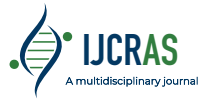| Title: URBAN DEVELOPMENT AND ITS RELATIONSHIP WITH THE WATER CRISIS OVER THE NEXT TWENTY YEARS (2042) IN THE CITY OF ZANJAN, IRAN |
| Authors: Bahareh Roki, Yousef Ghaderpour, Mahsa Azarbakhsh, Farzad Samiei and Mehrzad Samiei |
| Abstract: Today, urban settlements are at risk of water shortage for various uses due to climate change and rapid population growth. Although this crisis has been considered in urban studies from different aspects, the future effects of urban development patterns on urban water shortage have rarely been investigated. This research aims to identify areas prone to the development of Zanjan city, emphasizing the indicators of the water crisis and the supply of drinking water to the city’s population in the future. Currently, the underground water aquifers of Zanjan city supply 46% of its drinking water. In addition, due to the decrease in rainfall and increase in evaporation and air temperature (climate changes), the amount of surface water entering the Teham dam is decreasing. Consequently, Zanjan city becomes gradually dependent on underground water sources. In this research, the population growth trend was studied using the data obtained from the official reports of the Census Center of Iran. Also, the Canadian Water Quality Index (CWQI) method was used to analyze hadrochemical data, and interpolation methods were used in the GIS environment to draw quantitative and qualitative water maps. Based on the maps of the quality, depth, and direction of the underground water flow in the city and its surrounding areas, it is suggested that the western areas are the best place for the city’s expansion. Moreover, the best place in the western regions, especially the northwest, was determined to be more suitable for the city’s expansion. Overall, the region in the northwest and the model of linear city development were chosen as the optimal region and model, respectively. This decision was made according to the current direction of development and topographical conditions, the analyses performed, and issues related to the water crisis in Zanjan city. Notably, basic studies are very important in planning water supply for urban populations. The results of these studies play an essential role as basic information in different parts of the project. Furthermore, in the research related to urban design, the most important method of designing the passages for collecting surface water is urban drainage and using the CVF system in collecting surface water. |
| Keywords: Urban development, population, water quality, water resources |
| DOI: https://doi.org/10.61646/IJCRAS.vol.3.issue4.84 |
| Date of Publication: 16-07-2024 |
| PDF Download |
| Download Certificate |
International Journal of Current Research and Applied Studies
An open access multidisciplinary journal, ISSN 2583-6781
